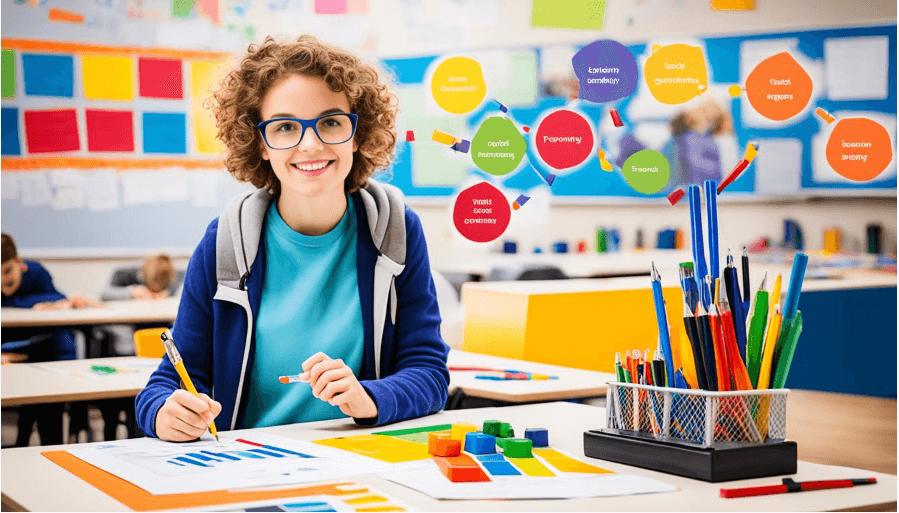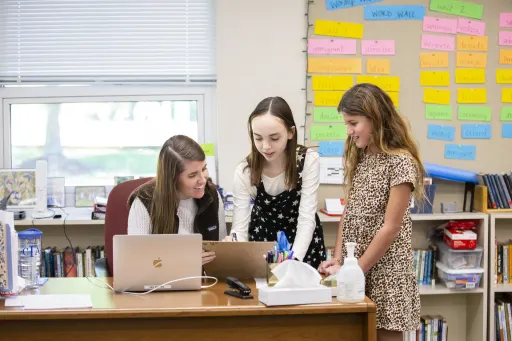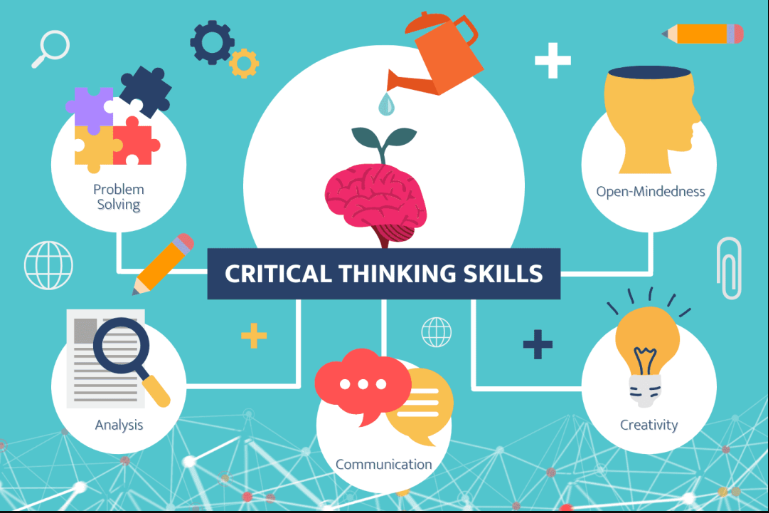Productive struggle is often talked about in schools. It is finding the right mix of help and letting kids try on their own. It means letting students work through problems before stepping in to help.
This method goes hand in hand with making learning challenging but doable. It’s not about more homework. It’s about offering difficult tasks just enough to push students while supporting them. Teachers help by making a classroom where it’s okay to make mistakes. This teaches kids to tackle problems on their own, develop resilience, and avoid unproductive struggle.

To build resilience, it’s key for teachers to let students figure things out. This is especially true for younger kids who might get stuck in the learning pit or lose interest quickly. Waiting to grade work and giving tasks that fit all learning levels are good strategies. These approaches help kids love learning and become self-learners while managing cognitive load effectively.
Teachers shouldn’t stop kids from facing challenges. Instead, they should offer the right amount of help and freedom. Using productive struggle in lessons helps kids learn to think deeply, embrace desirable difficulties, and make multiple attempts to succeed. These are important steps in learning to learn by themselves, supporting long term retention of knowledge and small groups collaboration.
Introduction to Productive Struggle in Education
Productive struggle is key to learning growth. It requires students to face challenges. Jo Boaler of Stanford says making mistakes is crucial for learning.
Japanese students spend a lot of time on deep thinking. They work on tough concepts a lot. But U.S. students do this much less, which shows a big gap.
What is Productive Struggle?
Productive struggle means students tackle hard materials. It’s not about giving them too much work. It’s about challenging them just right, in a supportive space. This way, learning becomes active, helping them grow.
The Misconceptions about Struggle
Many think that struggle means failure. But, productive struggle is about finding the right challenge level. Support is there, but it doesn’t take over.
Carol Dweck of Stanford says we shouldn’t avoid hard things. Instead, students should learn to deal with them. This teaches them to keep going and understand deeper.
The Role of Rigor in Learning for All the Students
Understanding academic rigor is key in effective learning. It’s often seen wrong, linked to more work or harder tasks. This view misses the point of solving problems deeply and thinking hard.
Definition of Rigor
Rigor in learning isn’t just about tough tasks. It has three parts: getting new knowledge, linking it to what we know, and explaining our thinking. This way, students think deeply and learn well. They reach their highest learning levels.
Balancing High Expectations with Support
It’s vital to match high expectations with strong support. This prevents students from getting too frustrated. For example, Common Core Standards get students ready for the future. They push teachers to help students who struggle.
It’s vital to match high expectations with strong support. This prevents students from getting frustrated and helps limit burnout. For example, Common Core Standards push teachers to help students who struggle while avoiding cognitive overload.
The Sweet Spot Between Scaffolding and Independence
Finding the right balance between support and independence is key in learning. Scaffolding helps, but we must not let students become too dependent. They should learn to solve problems on their own.
This means creating a space where students feel safe but are also pushed to try things by themselves.
Providing Appropriate Support So That Students Develop
Scaffolding should match each student’s Zone of Proximal Development (ZPD). The ZPD is the difference between what students can do alone and what they can do with help. Proper support helps students learn new things and become better without too much help.
A good teacher makes a huge difference. They help students learn and grow by working together. Asking questions, working in groups, and building on what students already know are key strategies.
Encourage Productive Struggle
Encouraging students to solve problems by themselves is crucial. This means letting them face challenges and learn from what happens. When students work through tough spots, they gain important skills.
Amy Morin, a psychotherapist and author, talks about how overprotective parenting can cause more anxiety in kids. Facing and overcoming challenges prepares children for big life changes. They become better at solving problems and more confident.
Benefits of Productive Struggle
Productive struggle is key in learning. It helps build thinking skills and makes students more resilient. When faced with tough but doable tasks, students learn a lot.
Developing Critical Thinking Skills
It’s very important for critical thinking. K-12 math students learn to solve hard problems. They learn to think better and solve problems well.
This helps their brains hold on to new skills. Learning becomes active, not just memorization.
Fostering Persistence and Resilience
Productive struggle also makes students keep going when things get tough. At first, they might struggle. But they get better with practice.
They learn the importance of trying hard. They figure out how to face challenges. This prepares them for solving problems outside of school too.
Implementing Productive Struggle in the Classroom
Research shows engaging in productive struggle is key for critical thinking and perseverance. It helps grow a student’s mind. The trick is to offer challenges that are just right, not too hard or easy.
This helps students understand things better and gain new skills. It’s all about finding the balance for success.
Strategies for Teachers
To make productive struggle work, planning is essential. Strategies involve challenging activities at the right level. Teachers should create a place where taking risks is okay.
Feedback should be timely and helpful. Using unique problems boosts creativity and problem-solving. Working in groups lets students see different views and learn together.
Neuroscience says these activities make our brains grow. They make us better at solving problems.
Common Missteps to Avoid
Sometimes, teachers find it hard to get productive struggle right. Mistakes include making tasks too hard or easy. This can make students upset or not care.
To do better, don’t just praise being smart. Value hard work and learning from mistakes instead. Make systems that support challenge and resilience.
Productive Struggle in the Classroom
Educators need to find the right balance in the classroom. It’s about making sure tasks are hard but doable. This helps students really get into their lessons and grow.
The workshop on this topic has sessions from ½ to 5 days long. Teachers can learn about everything from math basics to complex thinking. They pick the package that fits what they need, including workshops and more.
Workshops cover important areas like setting up, picking tasks, and how to keep students challenged. They answer big questions about what productive struggle is. They also discuss how to make a space where it can happen. This method has been shown to greatly improve how students solve problems and learn.
A range of teaching methods is key to tackling classroom problems. A book by Peter Brunn says it’s good when students don’t always have the right answer. Asking big questions and focusing on learning helps students understand more deeply.
Challenges help our brains grow, creating new connections. This concept is called “The Goldilocks Principle.” It means finding the just-right challenge is essential. Also, good relationships between students and teachers matter a lot. Students try harder when they feel supported.
A class should be a place where it’s okay to make mistakes. Techniques like the “failure, ta-da” moment help. Using approaches where kids try, talk, and connect help them learn how to tackle tough questions together.
Examples of Effective Productive Struggle
In learning, productive struggle helps students understand deeply and become resilient. Teachers can make challenges that help students but also support them. Let’s look at some ways productive struggle shows up in learning.
Learning to Play a Challenging Sport
Playing a sport like tennis is a great way to experience productive struggle. Beginners improve by playing against those slightly better. This method is like Lev Vygotsky’s idea of learning just beyond what we can do alone. It helps students develop toughness, keep trying, and build strength.
Math Problem-Solving Activities
In math classes, students find productive struggle through solving problems. They dive deep into math by taking on structured challenges. Spreading out learning and mixing old and new topics helps use long-term memory. Techniques like interleaving improve critical thinking and the will to keep going, especially in tough math areas.
Teachers make sure there’s a good mix of hard tasks and help. They reward effort and the will to keep trying, not just the right answers. This way, students really get the material and love learning it.
Building Metacognitive Skills Through Struggle
Building metacognitive skills helps students think about how they think. This leads to better learning outcomes. Most growth in these skills happens between ages 12 and 15.
John Flavell introduced the science of metacognition in the 1970s. Teaching this concept can help students understand how to improve their brains. With this, students can do better in various subjects.
Encouraging Reflection and Self-Assessment
It’s essential for students to think about their own learning. According to The Compass Advantage™ model, knowing oneself is vital for success. This helps them see and fix their own mistakes.
Studies show that essay exams boost students’ higher-level thinking more than multiple-choice tests. These metacognitive skills enhance academics and critical thinking. They also improve reading and problem-solving.
Using Metacognitive Guides
“A Bump in the Road” is a guide that helps learners find and fix difficulties. Such tools help learners figure out ways to tackle challenges. They learn from mistakes, which builds strength and resilience.
Activities like learning journals encourage students to reflect. The classroom becomes a place of deeper understanding and growth. Reflecting helps students recognize their own biases, improving social development, as shown by research.
Lastly, skills in understanding emotions and thoughts are key. Reflecting and assessing themselves helps students grow academically and personally. This is backed by experts.
Teacher’s Role in Facilitating Productive Struggle
Teachers are key in helping with productive struggle in class. Their help guides students as they tackle hard tasks. They balance not helping too much with letting students solve problems on their own.
Productive struggle is crucial, as noted by NCTM’s teaching practices. Teachers plan for student challenges and offer help at the right time. The goal is for students to keep trying, ask good questions, and help each other without simply giving the answers.
The switch to online learning in 2020, like in New South Wales and Victoria, Australia, brought new challenges. Despite issues like less control and fewer social connections, teachers found ways to help. They kept students involved through asking questions and problem-solving methods.
Teachers promote learning styles that support productive struggle. This helps students grow skills like perseverance. It also leads to a better understanding of math. By encouraging a mindset of growth and different ways to solve problems, teachers show that success in math comes from hard work.
Overall, teaching that supports productive struggle is really important. It ensures students see the value of trying hard. This approach improves their problem-solving abilities, cooperation, and interest in learning. Teachers guide students through difficult tasks, provide resources, and create a safe space to make multiple attempts. They must help students stay aware of their progress, manage cognitive load, and limit burnout.
Layering Meaning: A Strategy for Reading
“Layering meaning” helps make reading better by using fun, engaging methods. It helps students read more complex stuff with some help. This way, they learn better without always needing a teacher.
Interactive Reading Approaches
Interactive reading is key for better learning and understanding. By talking, asking questions, and working together, students get more from their reading. This helps make learning fun and includes everyone.
Bump in the Road Strategy
The “Bump in the Road” helps with tough parts of a text. It tells students to stop, think, and try different ways to understand. This not only boosts understanding but also helps them learn on their own.
Challenges and Solutions in Productive Struggle

Teaching productive struggle in class has its own set of challenges. These challenges need thoughtful answers. It’s important to balance lesson speed, offer feedback at the right time, and make changes to learning when needed. This way, we get all the good from productive struggle and keep frustration low.
Timing and Pacing Struggles
It’s key to challenge students at the right time to avoid them getting burnt out. Adding space between lessons and mixing them up helps students remember more. It also helps with managing how fast or slow lessons go.
This careful balance keeps students involved when things get tough. It helps them understand better and keep going. Success comes from understanding deeply and not giving up, in school and life.
Providing Constructive Feedback
Helpful criticism is very important when students are struggling productively. It pushes them to look at how they solve problems, not just find the right answer. Giving this kind of feedback helps students see where they can improve. It lets them think about how they think. Feedback should focus on problem-solving and effort, not just correct answers. This supports students in their learning pit, helps them notice gaps, and develop vocabulary and thinking skills.
This process helps build critical thinking. It makes students stronger and more independent. By focusing on learning rather than just results, students grow in a healthy learning space.
Conclusion
Productive struggle in the classroom turns students into capable learners who love overcoming challenges. It’s about hard work that builds real understanding and skills, say Heibert & Grouws (2007. Carol Dweck tells us it’s key to make kids love learning and feel brave.
This article showed ways to bring productive struggle into all subjects. From math problems to explorations in science, it’s important everywhere. It helps students think deeper and connect ideas better.
Growth in education means adopting a growth mindset and facing challenges. This makes students see struggles as part of learning. By giving tasks that promote productive struggle, teachers help students become problem-solvers ready for the future.
Frequently Asked Questions
What is Productive Struggle?
Productive struggle is when students tackle tough material that helps them learn deeply. It’s about working through hard tasks on their own, little by little. Research in psychology, including studies from Stanford University, shows that facing challenges strengthens problem-solving skills and builds resilience. Teachers can encourage students to write about their thought process during these challenges, which reinforces understanding and reflection. Integrating new lessons with productive struggle helps students retain knowledge beyond just the short term.
How is rigor defined in the context of education?
Rigor means having high standards and stretching students’ minds in school. It’s all about making sure learning is tough but possible, leading to better thinking skills.
What are the benefits of productive struggle for students?
Through productive struggle, students get better at thinking, sticking with problems, and managing themselves. They learn how to solve problems better. Challenges they can manage help them learn more deeply and keep skills longer. Facing challenges that match their level helps them internalize new lessons and retain skills longer, beyond just the short term. Students also develop growth mindsets, an idea supported by Stanford University research.
How can teachers balance high expectations with appropriate support?
Teachers keep expectations high by picking challenges that fit what students need. They step in at the right time to help and offer advice that boosts learning. But they don’t just give away the answers.
What is the role of scaffolding in fostering independent learning?
Scaffolding is a kind of help that supports learning without making things too easy. It lets students be in charge of their own learning. This encourages them to learn on their own.
What strategies can teachers use to implement productive struggle in the classroom?
To bring productive struggle into the classroom, teachers can create engaging activities. They give feedback that makes students think and offer tools for self-reflection. These help students tackle challenges in a positive way.
Can you provide an example of productive struggle in sports?
Sure. Learning tennis by playing against someone just a bit better is a great example. It challenges you just enough to improve without getting too frustrated.
How does the “Bump in the Road” strategy support productive struggle?
“Bump in the Road” helps students see and get past tough spots in learning. It pushes them to think more about how to solve problems. This boosts their ability to learn by themselves.
Why is timing and pacing important in productive struggle?
Getting the timing and pace right keeps students from getting too tired. Using lessons that mix things up helps students remember better. They stay interested and eager to learn without feeling too stressed.
What is the importance of constructive feedback in productive struggle?
Good feedback is key to helping students get better and understand more. It supports productive struggle by making them think and figure things out. This way, they learn to rely on themselves, not just the answers given to them.

More Posts
Top Team Productivity Software for Employees
Team collaboration and productivity are pivotal to success in the dynamic business world. Team productivity software has emerged as an indispensable tool, bridging gaps in communication, aligning tasks, and boosting overall efficiency. By...
The Businessman & The Fisherman
An American businessman took a vacation to a small coastal Mexican village on doctor’s orders. Unable to sleep after an urgent phone call from the office the first morning, he walked out to...
Unveiling the 8 Top Digital Personal Planners for CEOs
In today’s digital age, CEOs need top-tier tools, like the boss digital personal planners, to manage their tasks, projects, and teams efficiently. Especially when juggling crucial areas like client outreach ideas, marketing outreach...
10 Best Enterprise Project Management Software
In the dynamic business realm, keeping projects on track, under budget, and within scope is no small feat. It demands the right team and solid software to guide the ship through stormy waters....


